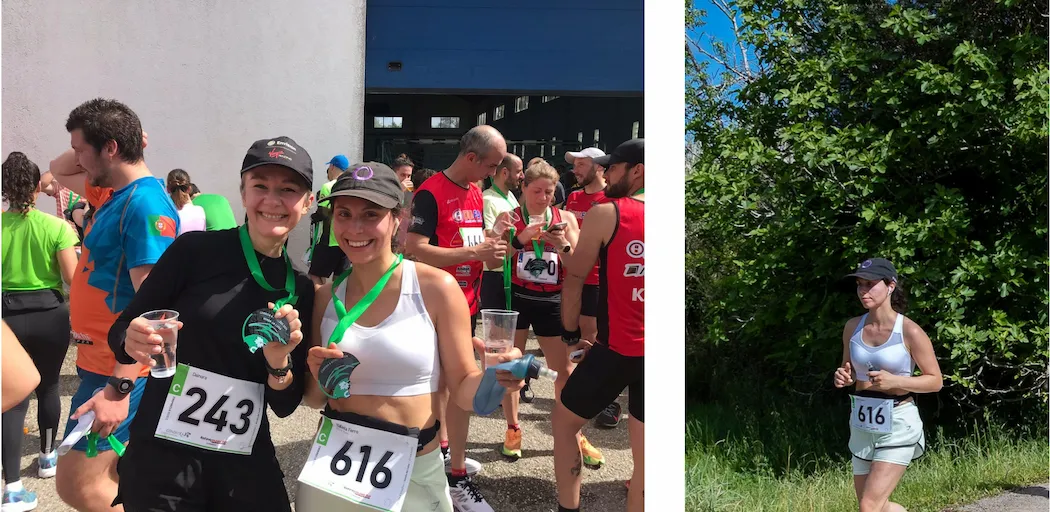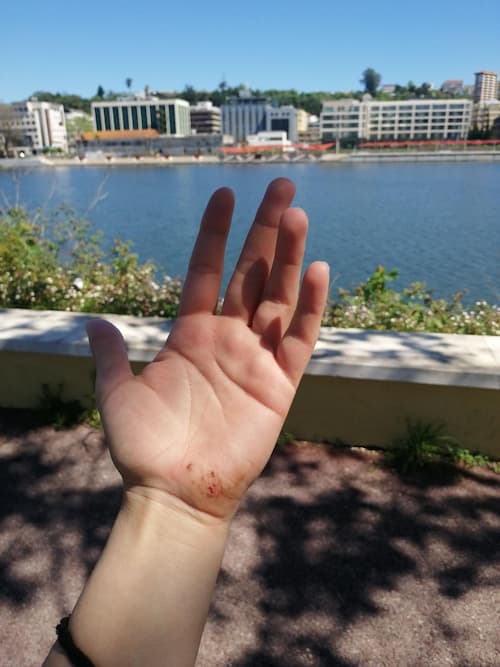Welcome back, friends! Another five weeks have passed, which puts me at 15 out of 24 weeks into my marathon training. In today’s update, we have my first half-marathon experience, an unplanned week away from training, and a quick Q&A — why I decided to run a marathon in six months and what I'm doing to prevent injuries.
Unplanned rest week
Still no injuries to report! But after 12 solid weeks of training, I found myself in need of a break, which I decided to take after noticing some mild signs of fatigue. Three consecutive workouts felt more challenging than they should have been. In the runs, I felt like I was dragging my legs, compromising my form, and even got stomach cramps. In the gym, I had to dial down the weights and extend the time between sets. Outside of workouts, I was finding it harder to focus and getting a bit grumpy – which could have been just good old stress, but signs were there, you know?
At first, I tried just adding an extra day off between workouts, but after the third one feeling weak and out of energy, I knew it was time to listen to my body and take a full week off. Then I eased back into my routine, without stressing about lost time and keeping an eye on how I was feeling.
I can tell it was the right call because two weeks after the rest I hit three personal records. Sunday, I hit my PR in the 10km, despite the uphill stretch that made me question every life decision that led me to that point. Monday, a new squat PR. And on Tuesday, I hit my maximum distance on a run. I was feeling fresh!
Running my first half-marathon
It was a rainy and windy Tuesday when I hit play on a podcast and set out to run my first half-marathon. It wasn’t a race day, just a regular slow run session on my training plan. There is a half marathon event coming up on my horizon, but since I’m planning my training schedule around the full marathon, I needed to start clocking those longer distances sooner. So, off I went.
Surprisingly, the biggest struggle was the heavy rain. My shoes and socks were drenched within minutes, and 4km into the run I was already dealing with blisters – a first for me. I kept most of the run telling myself to call it a day, but eventually hit that 21km milestone. My legs felt tired, but no major discomfort. Two days later, I paid a visit to Gerardo Studio (physiotherapist) for a check-up and got the green light to keep on running – under the condition that I buy better socks.
15-week update
Over the past five weeks, I averaged 23km per week, with the longest run reaching 24km. Ideally, the mileage would've been higher, but life had other plans. Between an unscheduled rest week and a little rendezvous with food poisoning, my mileage was even lower than the previous five-week period.
Going forward, I plan to reintroduce a third run per week, which I had temporarily put on hold until the issue of numbness in my feet was under control. Let's see if it stays that way!

Q&A
A while back, I was asked on Instagram if there were any topics that would be interesting for me to share about this experience. Before we jump into that, I want to say a sincere thanks to you, my friends who’ve been cheering me on. From sneaky kudos on Strava to shouting “You’re an animal!” when you pass by me mid-run (Ana Brett, you’re an angel!), to signing up for the same events and reading these posts… consider me officially hyped!
And now, thank you for sharing ideas on what to write about. I want to keep these posts short, so I’ll tackle two questions at a time in the upcoming ones.
Q: What’s your motivation for running a marathon? Why 6 months?
Running a marathon is a big challenge for me, both physically and mentally. I started this with a strong hate for running and a deep love for my comfort zone. I’d never truly challenged and dedicated myself to a sports goal until now, and I was curious to see how I’d handle it. Plus, my cardiorespiratory resistance has never been legendary, so I figured this goal could work wonders on that front.
As for the timeline, the original plan was to train for about 5 months to run a half marathon. Then I thought, if I was going to put in the effort, I might as well aim for a marathon in about 8 months – I didn’t want to drag out the training any more than necessary, given that running wasn’t exactly my idea of fun. However, life happens and I was only able to start a few months later than expected. With no marathon events happening during the summer months here in Portugal, I had to make a choice: extend the training longer than I wanted, run a marathon by myself, or gear up for the last event before summer—in just six months. All options are still on the table; I’m just aiming for the most optimistic scenario.
Some of you know there is an ongoing bet surrounding this goal – one good friend wagered that I couldn’t pull it off in six months. I promise it wasn't the original motivation, but I'll admit it spiced things up a bit.
Q: Did you get injured yet?

This question was meant as a joke because of running’s bad reputation – and unfortunately, I do know a few people who suffered injuries from running (or football). My only injury so far was scratching my hand after I tripped on a rock and gave my face a close encounter with the ground. Also, chafing in places as weird as my belly button.
It’s no secret that training for a marathon in six months with no running background isn’t the most responsible idea. I wouldn’t advise my friends to do this. However, I’m taking some precautions to minimize the risk.
First, let me start by saying that I come with a clean record – I never even sprained an ankle as a kid. This whole endeavour would of course be much harder if I was simultaneously trying to recover from an injury.
Starting with the basics: every week I dedicate time to complementary strength and mobility training focused on running performance and injury prevention; and I always start my runs with a proper warm-up. I know many people feel good enough starting the run at a slower pace, but a thorough warm-up makes a world of difference for me.
During my runs, I frequently monitor my form, to ensure it's not compromised, and scan my body, noting any discomforts or weaknesses. This gives me information about what I need to adjust in my complementary training. For instance, during the first weeks, the first thing to complain was my left hip flexor, so I incorporated exercises targeted to the hip flexors on my strength-training days.
This is a continuous process, and I make frequent adjustments to my programme to fit my needs—whether that means swapping, eliminating or adding exercises, or simply taking extra rest. The plan works for me, I don’t work for the plan. Having one is important, but being too rigid can do more harm than good. The only aspect I’m not flexible with is getting enough food and rest.
Lastly, I prepped for this. On one hand, I was fairly consistent with physical activity last year so the increase in training load wasn’t that dramatic. On the other, as I mentioned before, I knew I was going to do this months before I started, so I began introducing run-specific exercises into my workouts almost two months prior to my first running session, to build a solid foundation. This is also what helped me go from struggling to run 3km to finishing 10kms with relative ease without any running sessions in between. I recently read in a book* something along the lines of 'most people start running to get in shape, and never bother to get in shape to start running.' Something to think about! 🙂
* Born To Run 2, by Christopher McDougall & Eric Orton
That’s all for today! By the next update, I’ll have participated in my first half-marathon event, so wish me luck.